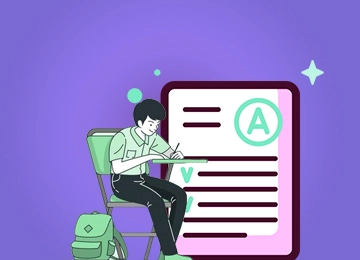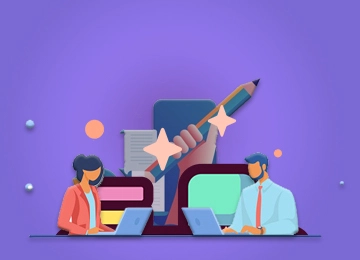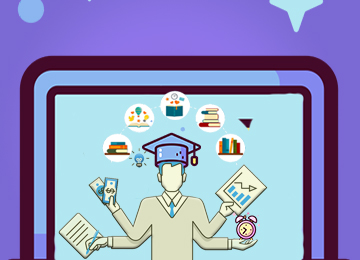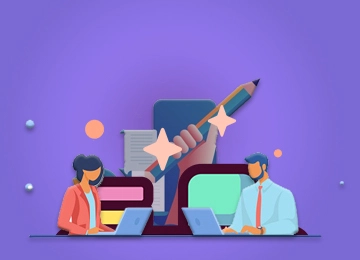
Search Assignments
Our Experts

Search Assignments

Customers Reviews
Innovative learning begins with understanding how people learn and how technology can facilitate that process. Once that understanding is in place, it's up to the educators to create a learning environment that takes advantage of the technology, tailors the content to the needs of the students, and facilitates collaboration, feedback, and assessment.
In a traditional classroom, the teacher lectures, and the students take notes. The teacher controls the class, and the students are mere receivers of information.
In a bright classroom, the students are active participants in their learning. They work in groups, use computers and other technologies to research, collaborate, and share ideas. In addition, the teacher is a facilitator who helps students learn by providing guidance and direction when needed.
According to various researches, various learners were elated while studying through Educom and excited every time their teacher asked them to operate it. It broke the monotony of the class, gave the students new visions, and strengthened their skills to work with advancing technology. Not only this, it increased the retention span and added a different twist to learning.
The students felt ecstatic every time they would get to do various activities which involved Educom; those activities did give them practical learning about the subject. In addition, the plethora of learning options available gave them the freedom to absorb and enhance critical thinking.
In a smart classroom, students use computers to access information, collaborate, and submit their work. The teacher uses a computer projector to display information and images on a screen or whiteboard. The class can also use the internet to build a connection with schools, classrooms, or experts around the world.
In a traditional classroom, the teacher delivers information to students who take notes. Students may work together to complete projects, but usually, this interaction is limited to the work they are doing in the same physical space.
With internet-based learning, students can connect with other classrooms or experts worldwide to collaborate on projects and learn from each other. The reach can be facilitated through social media, discussion forums, or video chats. For example, a science class could collaborate with a class in another country to learn about climate change, or a history class could discuss current events with a class in a different world.
According to various studies and research, it was found that Finland has the world's most exemplary education system in place. The Finnish National Agency for Education encourages educators to evaluate themselves to develop.
Using tablets and computers in school, Finland has successfully undertaken assessments to test educational objectives and does not use nationwide standardized assessments.
The second on this list is Japan which has been in the second position for three consecutive years. With different learning technologies and modern ways of learning, it has been able to give its learners an environment to grow and spread their wings.
For example, along with laptops and tablets, Japan uses AI technology to conduct exams, reducing administrative work. In addition, these AI technologies come up with question-wise feedback, which the students can correct during later exams.
Next on the list is South Korea; this country has given Japan tough competition in the rankings and has maintained the third spot for years. ICT Education has gained momentum in the past years. This ICT education imparts knowledge about science and robotics and facilitates students to design new robotic technologies.
All these countries have different and hybrid ways of imparting knowledge to children and giving them the most viable and practical knowledge. Their learning systems ensure that their students are ready for the industry and the modern technology used in the market. The countries, as mentioned above, incorporate all the latest technologies in their curricula like tablets, AI, cloud technology, and robotics.
The flipped classroom is a model in which students watch video lectures, complete homework assignments at home, and then use class time to work on projects and ask questions. Flipped classrooms are thought to promote student engagement and active learning.
Digital learning tools can help flipped classrooms by providing video lectures and homework assignments that are both engaging and interactive.
Edtech ought to constantly work together. It is a solution to increase educational outcomes and productivity. The advantages of technological education extend beyond the students themselves and increase the influence of teachers in students' lives.
It offers instructors countless opportunities to grow and develop in response to the shifting surroundings. In addition, with the proper use of electronics, educators can significantly simplify their instructional procedures and use the learning setting in the school.
If the past has taught us something, whatever technology encounters ultimately becomes more equitable. In reality, using tech in the classroom to alleviate educational inequality is more important than before. It has significantly improved the cost, accessibility, and effectiveness of education. Several of the greatest blessings in modern years is the employment of new tech in remote India's schooling.
Trainers can build new skills and offer additional content to the learners with applications and technology. In addition, business technologies can help private institutions use tech. Learners can also take advantage of an engaging educational environment. Whatever the disadvantages and the post effects of the use of technology in schools and education, it is the reality of today.
As the Greek philosopher, Heraclitus said, "the only constant in life is change" the shift from the traditional to the modern classroom is just the start. The future will encounter many more changes with the advent of modern technologies, and while we may not agree with many of them, we would have to comply with them.




No Comments